Historical Overview Section
Before the rise of the Jin Dynasty the Khitan Liao had ruled over the Later Horse Nomads of Mongolia, Manchuria, and parts of North China. In 1125, the Jin overthrew the Liao and attempted to gain control over Mongolia, triggering a fightback from the great grandfather of Temujin (Genghis Khan) and awakening the Mongols as a coherent national entity. This in turn set in motion a chain of events that by 1203-1205 saw the Mongols under Temujin destroy all the remaining rival tribes and in 1206, Temujin was crowned as the Khaghan and assumed the title "Chingis Khan" (or more commonly known as "Genghis Khan", probably meaning Oceanic ruler or Universal ruler).
Genghis Khan appointed his loyal friends as the heads of army units and households, dividing the army into arbans (each with 10 people), zuuns (100), myangans (1000) and tumens (10,000) of decimal organization. The new army quickly came into conflict with the Jin Dynasty and the Western Xi Xia in northern China, as well as the Moslem Khwarazmian Empire, raiding as far as the lands of the Kievan Rus.
At the time of Genghis khan’s death in 1227, the Mongol Empire ruled from the Pacific Ocean to the Caspian Sea. Ogedei succeeded to the throne according to his father’s will in 1229 and set off to subjugate the Bashkirs, the Middle Bulgarians and other nations in the steppes, as well as establishing Mongol authority across Manchuria, crushing the Eastern Xi Xia regime as they got in his way. The Jin recovered and defeated a Mongol contingent in 1230, triggering the Great Khan to personally lead his army against the Jin and in an alliance with the Song Chinese Dynasty, the Mongols finished off the Jin by 1234 - but then fell out with the Song Chinese over who got to keep large parts of Manchuria.
Whilst this was all happening, Mongol Invasion and armies were destroying the last bits of the Khwarazmian Empire and advancing into Azerbaijan, Armenia and Georgia. Despite Mongol victories over Korea armies, Ogedei’s attempt to annex the Korean peninsula met with less success as the Koryo Koreans only pretended to surrender, later massacring Mongol darugachis (overseers) and pro-Mongol Koreans.
At a meeting in 1234, Ogedei was convinced by a particularly compelling powerpoint presentation to conquer the Song Chinese Dynasty, and the Koreans. Three armies commanded by his sons invaded southern China however they couldn’t deliver the final blow to their enemy. A leading generals sudden death in Chinese territory forced the Mongols to be inactive in South China, and Prince Koten invaded Tibetan territory after their withdrawal. MOngal armies disguised as Tatars, Ilkhanid Mongols, Mongol Invasion and Timurids were causing havoc in Russian, the middle east and Europe as Ogedei took over Uchch, Lahore and Multan of the Delhi Muslim Indian Sultanates, stationed a Mongol overseer in Kashmir, and agreed to receive tributes from the Koryo Koreans through his diplomacy and military forces.
When Ogadai died it all went a bit wrong, as the heirs refused to meet up and agree a course of action and it was not until 1246 when Guyuk got to assume full control again - but in any case, their attention was mainly focused westwards, not into China and India at the time. After Guyuk, and in 1251, Mongke was acclaimed as Great Khan of the Mongol Empire. In an attempt to outflank the Song Chinese Dynasty from three directions, he dispatched the Mongol armies under Kublai to Yunnan and under his uncle Iyeku to Koryo Korean territitory, ravaging the country. Kublai conquered the Dali Kingdom in 1253, Mongke’s general Qoridai stabilized his control over the Tibetan plateau and Subotai’s son ,Uryankhadai, beat the Tran Dynasty in northern Vietnam into temporary humiliated submission in 1258.
Another meeting and powerpoint presentation decided Mongke Khan to lead his army to complete the conquest of the Song Chinese. Military operations, while generally successful, were prolonged. The weather became extremely hot and the Mongols began to suffer from bloody epidemics. Mongke decided to stay instead of retiring north as the Mongols usually did. Unfortunately, he died on August 11, 1259, due to reasons disputed till this day. This event began a new chapter of history for the Mongols and forced most Mongol armies to withdraw.
Who are these Mongols anyway then?
The FoG army lists reproduce the Mongols in many guises. They are:
- Mongol Conquest - Empires of the Dragon : 1206-1260, The origin of the Mongols, Ghengis Khan, invading China and Korea.
- Mongol Invasion - Oath of Fealty : 1223-1242, Ghengis invades Russia, his sons invade Bulgaria & Hungary and then turn into the Golden Horde Tatars.
- Tatar - Eternal Empire : 1242-1500, a multi-ethnic conglomeration extracting tribute from Russia, the Baltic, the Crimea and all the 'stans but finally coming unstuck against the Timurids and then the Ottomans.
- Ilkhanid Mongol - Swords and Scimitars : 1230-1353, Mongols (and assimilated Turks, Persians and Cumans) in Iran, Azerbajan, Iraq messing with the Crusaders, Caliphates and Caucauses. Has some Frankish knights for added interest.
- Timurid White Sheep Turcoman or Black Sheep Turcoman - Eternal Empire ; 1360-1500, Tamerlane, almost restoring Ghengis' glory days from China to Europe, 4 elephants, some bowmen on foot.
- Later Horse Nomad - Empires of the Dragon : proto-Mongols
- Yuan Chinese - Empires of the Dragon : Sedentary Mongols in China.
Using the army in FoG
You may want to review the Troop Types in FoG shooty cavalry page of the FoG tactical guide methinks...
- Like other shooty cavalry armies, your battle plan is usually to stake out as much ground as possible to block enemy Second Moves, at least in some sectors, and leave ample manoeuvre room behind your lines. Getting first move is very helpful so losing the PBI roll is preferred by some players, although your tough Cv may be willing to face the enemy in close combat, so its therefore less critical to keep lots of manoeuvre room to the rear.
- Sometimes you are lucky and the enemy deploys with a hanging flank you can readily outwing and envelop, or a good flank march opportunity presents itself, but often the terrain and enemy dispositions limit you to a frontal approach of disrupting, loosening and disjointing the enemy line of battle with shooting, threats, and uncontrolled enemy charges in order to expose gaps, flanks and other weak spots you then exploit with concentrated shooting or timely charges
- Destroy or flee enemy Skirmishers, draw their mounted and aggressive foot away from their other troops by skirmishing - he will have to charge shooters to reduce their effect - pick off isolated detachments, and provoke charges where possible. Work around his flank and hunt his BG count filler such as Mobs and LF.
- Ultimately your cavalry will need to be the ones to win the battle for you by running down your opponents - remember this and don;t expect your LH to do all the work in eroding enemy morale and competence to breaking point.
- One common mistake with all Shooty cavalry is to take advantage of the possibility evade too often - superior armoured cavalry swordsmen are still very potent combat troops against most enemies, and it is often better to advance in 2 ranks (inflicting more shooting as a result) and take on any enemies in hand to hand combat.
- The time to commit is once an enemy has gone disrupted, or if they have lost bases - waiting and skirmishing in the hope they go fragmented may well be gilding the lilly.
- Superior (un)protected drilled cavalry are not too bad when combined with other LH on a flank - they will outmatch standard LH who might otherwise risk standing up to your expensive Superior LH - and may catch them when they evade. They are just as good as armoured cavalry against Heavily Armoured knights as well.
- By using several LH BGs, you run those up the middle and slow down the enemy's (hopefully) less maneuverable units. With the flanks unprotected, you should overload a flank with your cavalry and light horse. Try to swing your LH around the flanks and rear of a single anchor.
- I've seen my buddies drop no less than 9-10 dice onto a single BG. For most BGs, you are hitting on 4s and should get 4-5 hits easily (especially with your re-rolls). That means, every time you can pull that off, your opponent will have to test with a -1 or -2 and take a deathroll! No, you don't win quickly, but it is hard to lose too.
- One of my frequent opponents complained that an army like the Mongol Conquest have too many superior and not enough dice. You end up taking too long and running out of time to win. To offset that, he prefers to use the LH to disrupt an opponent and then charges in with a slightly less expensive, Superior, Armoured Lancer Cavalry. You end up busting through that anchor more quickly and can then ,rapidly, take advantage of the failed battleline. This (of course) means that you have to find a different steppe army (perhaps the Huns?)...
UK Tournament Results with this army
Useful Links
User-contributed links about this army:
- Register and you can put you own link in here and then write some brief detail about the link here
- Register and you can put you own link in here and then write some brief detail about the link here
- put the link text readers will see in here write some more detail about the link here
Allies
Put information on allied contingents here - including recommendations on which to use, and why.
Painting and Collecting the Army
- Paint schemes, insignia, shield designs? Put it here.
15mm Manufacturers supplying figures for this army
You can see some of the figures in the Ancients Photo Gallery also on this site. The Mongols had many subject troops, so look at the other Arab and East European ranges as well.
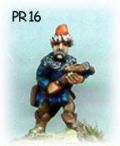
|
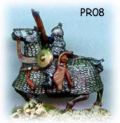
|
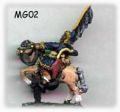
|
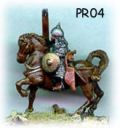
|
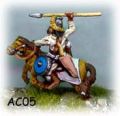
|
- Essex Miniatures Ilkhanid Mongols in their Crusades range, 9 Mongols in their ancients range
- Donnington 30+ Mongol figures
- Gladiator Miniatures by Fighting 15's (Gladiator Games) 5 Ilkhanids in their Crusades range
- Old Glory 9 Mongols
- Museum Many Mongol and other figures
- Irregular Minis 13 Mongols in their Asian and Turk ranges
- Lancashire Games 5 Mongols in their Ancients ranges, some tatas in their Renaisance range
- Isarus (more former TTG figures) 19 Mongols
- Viking Forge Mongol range with 5 figures
- Brian Hall’s Hall of Ancient Warriors 6 Mongols
- Battle Line (NZ) former TTG Ranges, as above
- Outpost - Central Asian Turk range
- Khurasan - Many Central Asian types
- Legio heroica Turcomans in their Crusades Arab ranges, and a new Mongol range too
- Naismith & Roundway Turcomen in their Persian range
- SHQ Miniatures/Kennington Yuan, Ming & Mongols
- Legio Heroica new range (as of 2010) of Mongol cavalry
- Alain Touller Alain Touller, who sadly passed away in 2014. The ranges are no longer available, but included true 15mm figures from France - lots of variety in their "Peuples des steppes" range
Army Lists
Sample army lists for this army
Name of Army / Date
- Using asterisks inthe edit mode creates a bulleted list in the actual site
- This is a lot easier to do than easier than setting up tables
- For FoG I suggest listing your army in order or march
- with troop desctiptions on each line, for example
- 4 HF Armoured Average Drilled Impact Foot Swordsmen
- 8 LG Undrilled Unarmoured Poor Bowen
- Dont forget to include your Generals !!!
Include any notes you want here, including comments on how to use - or play against - the army.
Remember to leave a line before you copy the above section as a template for your own list
eBay Listings
UK Bookstore